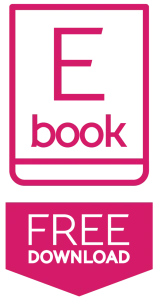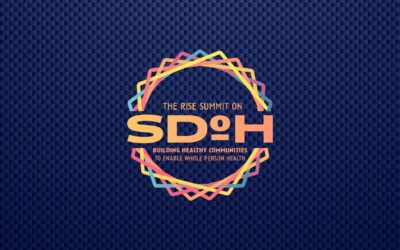Diabetes is a global problem. There are over half a billion Type 1 and Type 2 diabetics around the world with varying degrees of access to health care information, care, and funding. In the United States alone, almost 40 million diabetics face severe health risks due to accompanying chronic conditions like heart disease, stroke, and kidney failure.
Besides the prevalence of diabetes in our population, a key challenge is ensuring patients follow their health provider’s protocols for healthy living. Maintaining a healthy weight, keeping blood pressure and cholesterol under control, taking required medications and/or insulin, watching their diet, and participating in a regular exercise program all contribute to helping the patient manage their diabetes and lead the healthiest life possible. All of these activities are vital for diabetics, so how can a healthcare provider keep their patients on track?
Simple technology for a complex disease
Health care professionals are doing their best to meet this challenge and often new technologies are seen as an important way to start the patient on a path to healthier choices. Digital technologies like apps are prevalent throughout our society. There are apps for seemingly everything. From food prep to games and exercise monitors to smart home interfaces. Calcium, a digital health analytics company, has developed a platform which guides diabetics through easy-to-follow pathways that contribute to increased compliance with their care team’s plan, and most importantly, improved outcomes.
This technology was used as part of a quality improvement initiative conducted by an Ivy League university that monitored Type 2 diabetes patients through a program of diabetes education, supported by the Calcium app. The results of the initiative were extremely positive and speak to the importance of integrating technology in health care management programs.
Education in practice
The main purpose of this quality improvement education initiative was to “…implement and evaluate the use of diabetes self-management education programs as a cost-effective measure in improving and sustaining glycemic control and overall individualized health outcomes of adult diabetes with Type 2 diabetes.” The patients were all adults over the age of 18, had been diagnosed with type 2 diabetes, and were noncompliant with their diabetes management efforts. This meant that their minimum A1C (a test to determine the average glucose in the blood in a 3–4-month period) measured over 8% (the recommended A1C is under 7%) and they struggled with maintaining the other aspects of their health care management plan. The majority of the subjects were diagnosed over 10 years ago.
A key aspect of the technology is that it’s focused on education. It’s not punitive nor does it expose the user to any negative feedback. Its function is to monitor and remind, not scold. The participants were shown how to use the app and directed through a “participant pathway” for self-management education based on the curriculum created by the Association of Diabetes Care and Education Specialists. The content of the curriculum was divided into three basic tasks: Read. Watch. Do. More specifically, the participants were asked to:
- Read something about diabetes education or look at pictures supplied by the initiative director
- Watch a short video about a specific area of diabetes management
- Do simple tasks within the app (e.g., enter food types, length of exercise, etc.)
All of these tasks reinforced the overall messaging of the education and helped the participant stay on track with their diabetes management efforts.
Working with a diabetes care team provides even more support. In what could be a typical use case, their primary care provider can help them understand the importance of monitoring their blood sugar and caloric intake. The patient can be assigned reading in the app about this (reinforcing the activity), then they can watch a video with someone demonstrating how to count calories. Lastly, the patient can then enter their own blood sugar measurement or meal calories in the app (or sync it with their devices), which can be reviewed by their care team to ensure the patient is following the plan. This reinforcing support can go a long way in improving a diabetic’s life and lessen the risks of out-of-control diabetes which could lead to dangerous chronic conditions.
There is also a behavioral component of the user experience on the app. The “gamification” aspect of the technology is a positive psychological boost to the user where they can set up leaderboards for “healthy” competition with family members or friends to keep engaged with their health journey. Also, syncing fitness trackers like Apple Watch or Fitbit which can help monitor vitals and other relevant health data is a fun way to stay on top of patients that are recovering from surgeries or just trying to get—and stay—healthier.
Positive signs through technology
A positive aspect of this educational effort—supported by this technology—is that the initiative saw some tangible successes among the participants using the app. As mentioned earlier, an A1C of under 7% is the target for most type 2 diabetics. The participants had A1C percentages of at least over 8. Among those who registered a “minimal use” or “significant use” of the app, there as an average 1.6% reduction in A1C levels over the course of the initiative. So, if a participant had an 8% A1C, they saw it reduced to under recommended levels simply by using the educational components, reminders, and engagement pathways of the app. This is key. Becoming engaged and taking ownership of one’s own health is truly what makes this app effective. The care team noted, “Usually, when we start a new medication, it can improve the A1C level anywhere from 1.5% to 2%, depending [on] what medication we start them on. Using the app was comparable to starting a medication with the improvements that we saw.”
Engage and empower
Using technology to encourage patients to become more—and remain—engaged in their own health is a win-win for our healthcare system, its practitioners, and most importantly, the patients themselves. Simple reminders, basic task completions, along with integrated multimedia functions can empower patients to think healthier and be more engaged. Additionally, technology like this can be integrated with other devices like blood sugar monitors, blood pressure screeners, and fitness trackers to provide even more synchronicity for a whole health improvement program. The successful improvement of A1C levels in this quality initiative shows that strong patient engagement, through the use of technology, leads to healthy outcomes.

















